Some Nice Design in Jim Rugg's Hulk Grand Design Monster
There are just these clips and memories of old comics. This is not a Hulk comic but a comic about Hulk comics, a snake eating its tail.
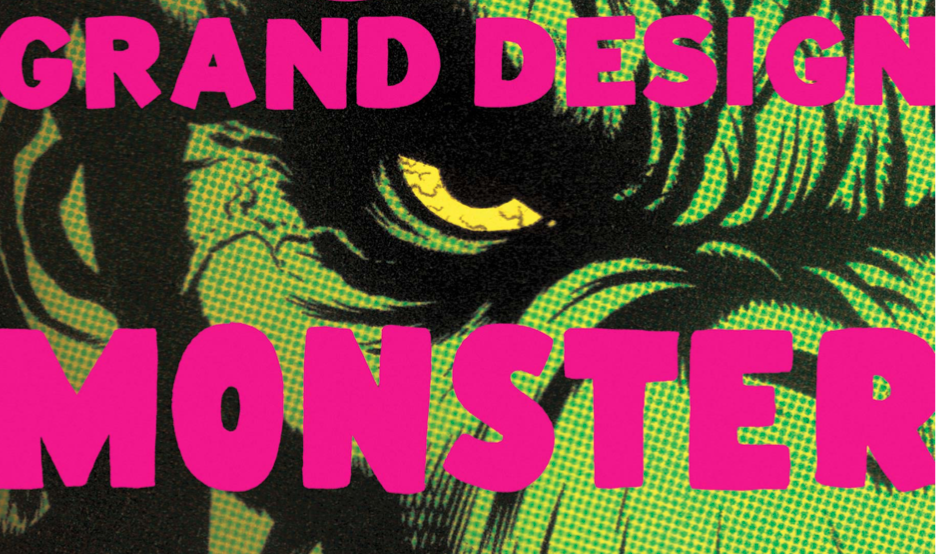
By now, we should know what to expect from these Grand Design projects– indie cartoonists (Pittsburgh-based no less,) faux aged-yellow pages, hundreds of old issues and their plots condensed down into relatively easily-digested chunks. The first two Grand Design series focused on X-Men comics (primarily Claremont-era) and Lee/Kirby’s Fantastic Four, taking comics that were created on a month-in/month-out basis, attempting to reshape them into expansive and consistent narratives. Ed Piskor and Tom Scioli took these comics that had an overall but unplanned structure to them and essentially remixed them to tell the same stories as if the original creators had the vision to be able to create narratives with a beginning, middle, and end. Piskor’s X-Men: Grand Design reforms all of Stan Lee, Roy Thomas, Len Wein, and (mostly) Chris Claremont’s stories around the tale of Jean Grey and the Phoenix while Scioli’s take on the Fantastic Four took the first 100 issues of that series and gave them a satisfying conclusion that Lee and Kirby never got to do.
Rounding out the Cartoonist Kayfabe school of creators, Jim Rugg is the latest cartoonist to step up to the Grand Design challenge, turning his pen towards another Kirby/Lee creation; the Hulk. One of the foundational characters of the Marvel Universe, the 1962 story of the Hulk is Jekyll and Hyde filtered through a superhero lens. The Hulk probably owes far more to the monster comics that preceded Marvel’s super-hero age (something that would be interesting to explore sometime) but it placed the monster within the superhero context, making him a founding member of the Avengers and often duking it out against the Fantastic Four. Bruce Banner was a mild-mannered scientist caught in the blast of a nuclear bomb. Instead of killing him, Banner finds that when triggered he turns into a rampaging, green monster, hunted by the army while all he wants to do is find peace for himself. There are so many tales that have been built around that concept as the Hulk is a great character to explore feelings of loneliness, disconnection, fear, and anger around.
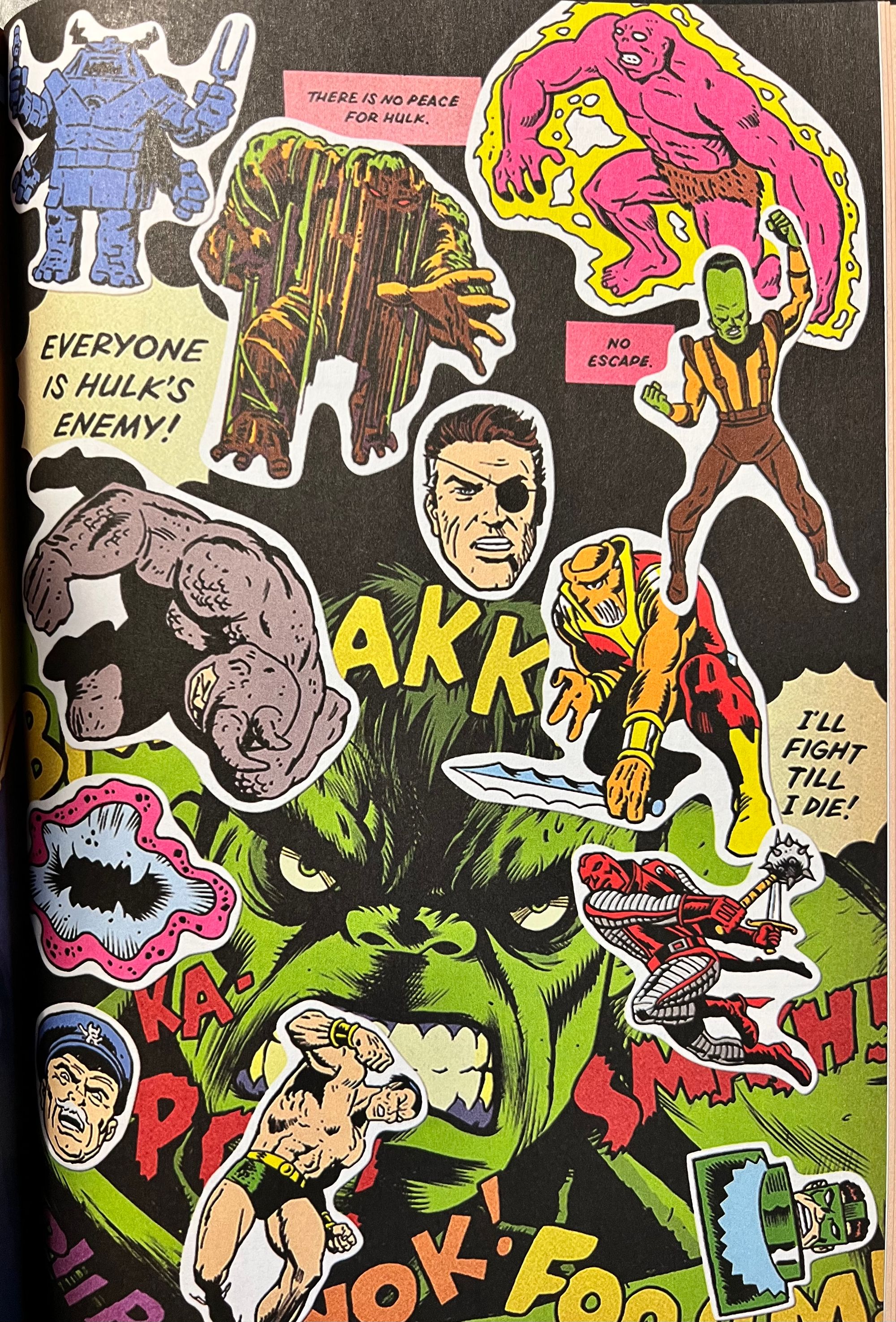
In the first of two issues, Rugg’s Hulk Grand Design: Monster focuses on the time between the introduction of The Hulk in Hulk #1 and runs through Hulk #300 when the character is banished into another reality. It covers comics by Stan Lee, Jack Kirby, Roy Thomas, Harlan Ellison, Herb Trimpe, Bill Mantlo, Sal Buscema and so many other legendary creators. Unlike the first two Grand Design projects which were largely re-interpreting the works of a small group of creators (Claremont and Kirby & Lee,) Rugg’s source material doesn’t have that strong of a singular artistic viewpoint to work with as Piskor and Scioli had. The second issue due out in about a month should cover Peter David’s long run on The Incredible Hulk and will probably give Rugg a bit more of a focus. But this first issue covers the work of so many writers and artists that Rugg has to summarize and emulate while trying to establish his own consistent artistic voice over all of this work.
While he’s working under the same Grand Design guiding principles established by Piskor’s X-Men series, Rugg’s approach and goals feel different. These are largely fan comics, created by and for fans. You can read so many modern comics out today that are just riffing on the stories that the creators read when they were kids. Even the recent strong Immortal Hulk series by Al Ewing is built largely on the work of Peter David. The new book probably doesn’t exist without the work done in the older comics. And when it’s done right, a writer like Al Ewing uses the earlier work as a foundation and starting point but finds his own story to tell. But these Grand Design books are a different beast– they use the earlier work as the blueprint for their stories, basically just remixing the past work through Piskor, Scioli, or Rugg’s point of view.
But Piskor and Scioli were at least trying to tell stories in their projects, showing how with a bit of narrative tinkering these long, rambling comic series could be turned into true stories with a beginning, middle, and end. They were attempting to shoehorn modern comic storytelling structures on comics that were created in another and different time. Rugg’s endeavor feels far more like a walk down memory lane, an attempt to cover some of the greatest hits. It suffers from its constant “and then…” approach to these stories. There’s no sense of Bruce Banner or the Hulk’s events being a progression or a story. There’s no development happening to the characters that build off of what came on the pages before.
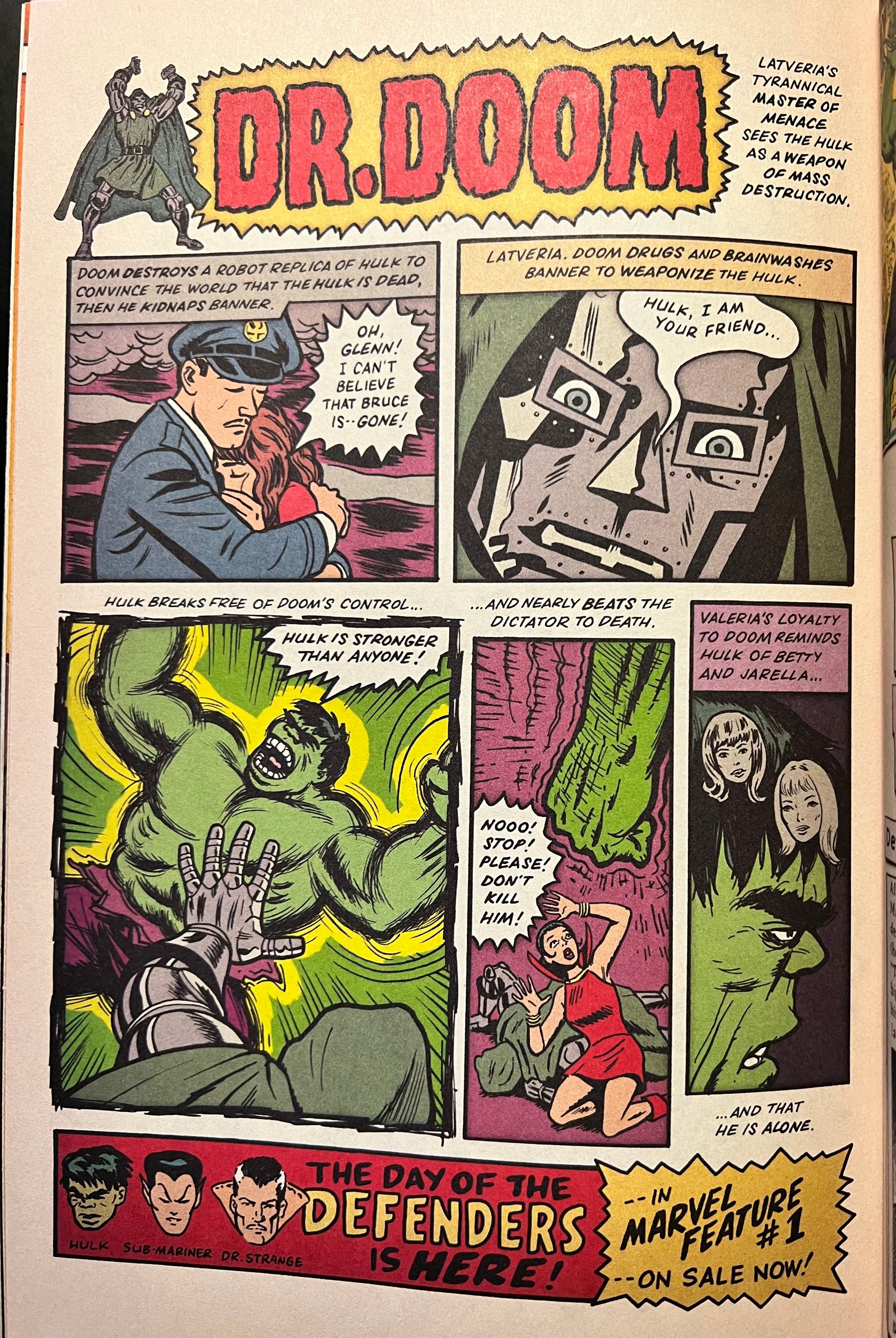
Rugg’s approach puts less emphasis on there being a “Hulk” story. He’s not applying any kind of narrative logic to these three hundred issues or even trying to demonstrate some truly grand design to this story, and thereby may be invalidating the name a bit. He’s picking out moments and story beats from these older stories and applying an “isn’t this cool” filter to them, stringing along events from within the comics and the larger pop culture world without really wanting to do anything with them. There’s no design evident here, no commentary or exploration of the character or events. There are just these clips and memories of old comics. This is not a Hulk comic but a comic about Hulk comics, a snake eating its tail.
Filtered through Jim Rugg’s brain, the story of the Hulk becomes this story of the comics themselves. It’s a celebration of all the moments that were created by these writers and artists, starting with Lee & Kirby and carried through to Bill Mantlo and Sal Buscema. Rugg recreates this history through small vignettes, sometimes just a panel long and other times a whole page, that are emblematic of these comics. There’s a fun rush that comes from seeing these comics recreated but it’s also the same rush that comes from finding Waldo in a “Where’s Waldo” book; it’s all recognition of a character without wanting or needing to know anything about the character. Hulk Grand Design: Monster is a greatest hits version of these comics. More accurately, it is cover versions of those greatest hits. It’s curated and recreated which is kind of the directive of these Grand Design books without even trying to add anything to these stories.
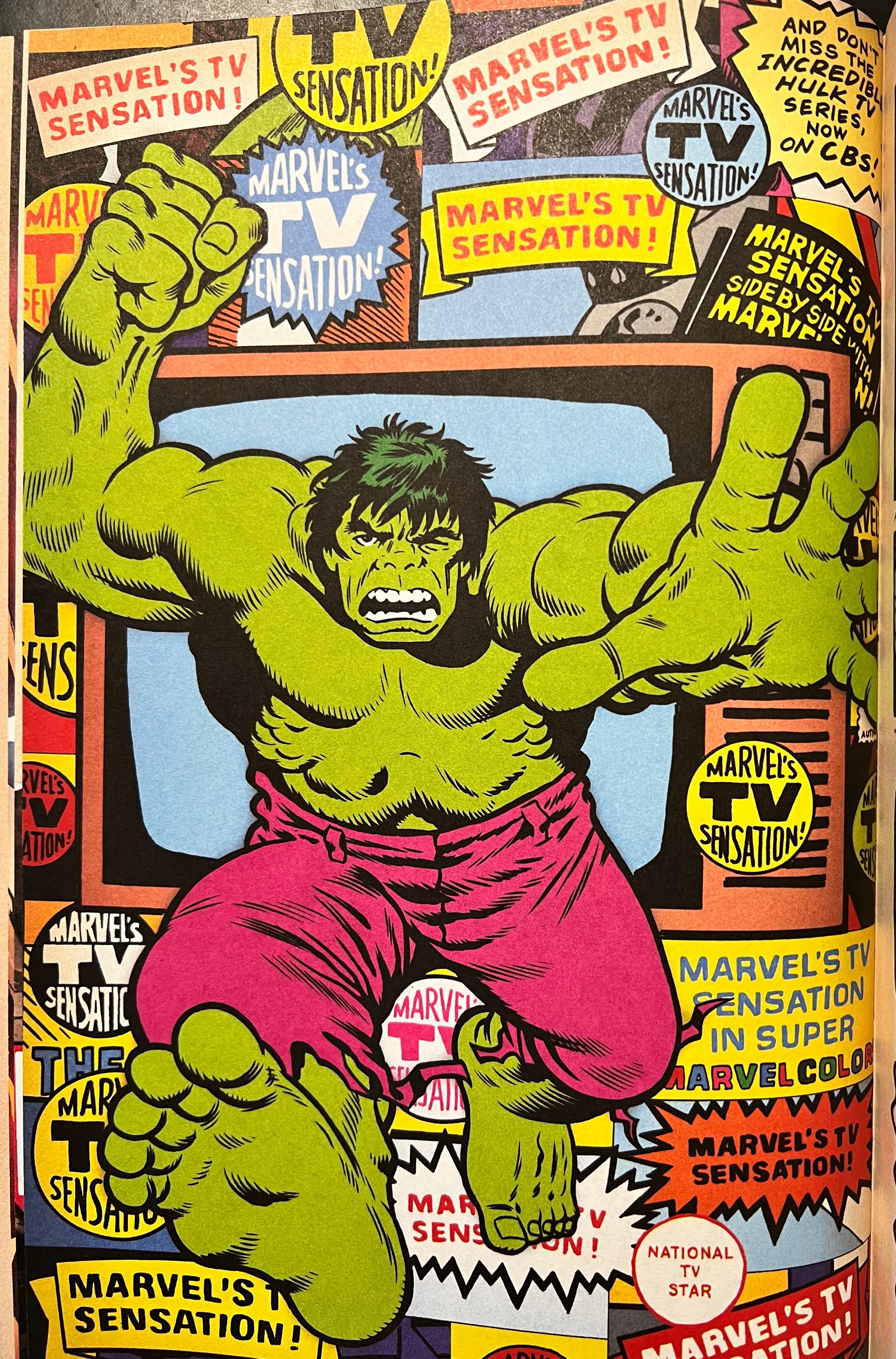
The way that Rugg does this is by basically creating a scrapbook of the “life story” of the Hulk, from pictures of his birth through the troubled childhood of the green behemoth. More traditional comic pages are interspersed with recreated comic covers, drawings of old stickers, and even some of the old Marvel stamps that they used to print long ago in the Bullpen Bulletin pages. There’s even a fun little Fabulous Freak Brothers callout when “Hulk joins a hippie commune but finds no peace.” Rugg’s Grand Design feels like it’s having far more fun playing around with Herb Trimpe and Sal Buscema’s artwork than it is with exploring Roy Thomas or Bill Mantlo’s stories. You’re not going to learn anything new about the character here but getting to see Rugg recreate the cover to The Incredible Hulk #181 on lined notebook paper with colored ballpoint ink pens already makes this one of the most fun artbooks of 2022.
Now let’s just take a moment to admit that, unlike the source material that previous Grand Design projects have had to work with, there are not a lot of classic Hulk stories to begin with; some but not a lot. The strength of the character is more in the kind of stories that you can tell with him rather than the specific stories that have been told. (And that’s just a generalization as there have been some really good Hulk stories.) And maybe Rugg recognized that at the start of the project and decided to have more fun by taking a look at how the stories were told more than with the stories that were told. That’s why the emphasis of this book seems to be built more on the work of the artists Jack Kirby, Herb Trimpe, and Sal Buscema than the writers like Stan Lee and Bill Mantlo. As that kind of walk down memory lane, Hulk Grand Design: Monster is a fun nostalgic look at the first 20 years of Hulk comics.




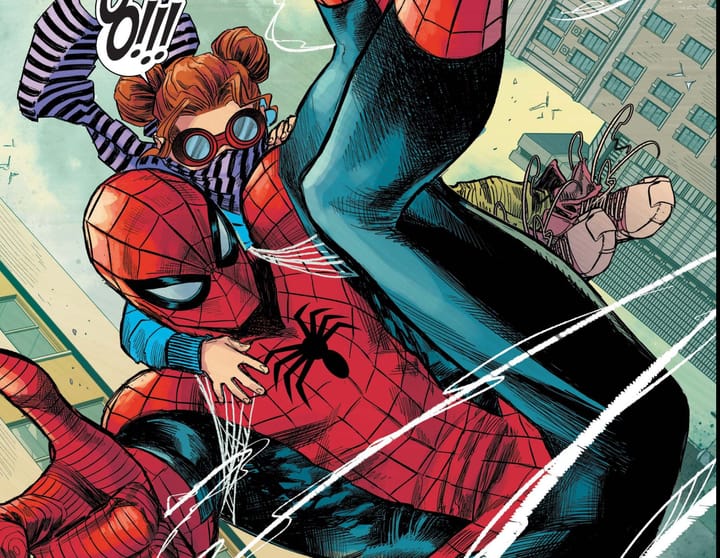
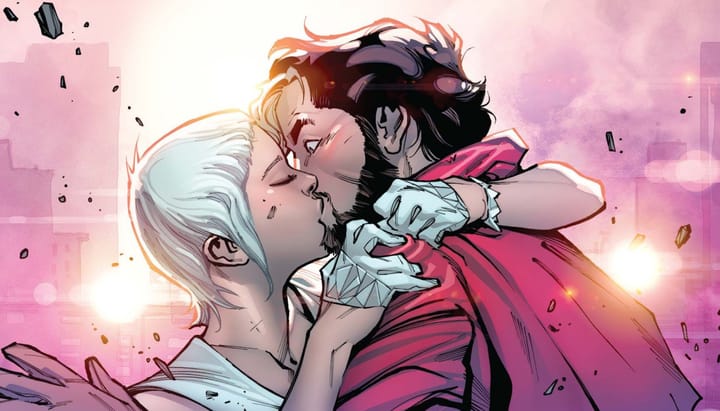
Comments ()